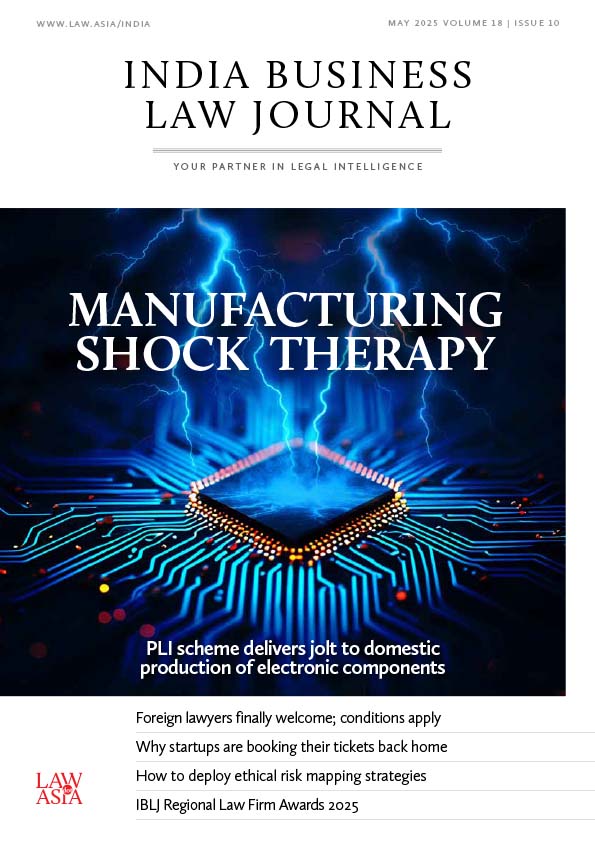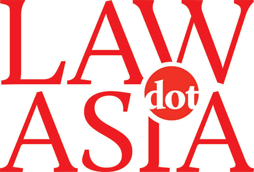India Business Law Journal – September 2024
Volume 18, Issue 3
If you are a subscriber, please sign in below.
You must be a
subscribersubscribersubscribersubscriber
to read this content, please
subscribesubscribesubscribesubscribe
today.
For group subscribers, please click here to access.
Interested in group subscription? Please contact us.
你需要登录去解锁本文内容。欢迎注册账号。如果想阅读月刊所有文章,欢迎成为我们的订阅会员成为我们的订阅会员。
Highlights:
- Big nets have holes: CCI empowered to scrutinise big deals, but tightening the net may expose loopholes
- Unsung heroes: Avenging law firm BD professionals
- Calculating patent infringement damages in India
- ICICI Bank GC: Banks can help clear court backlog
- Can third party litigation funding work in India?
No escape?
Can competition law development capture merger deals deemed unfair?
Mergers and acquisitions is a busy field of law in India, with professionals handling multiple different deals at a time. The largest of these carry the potential to make tidal waves in the Indian market. From a regulatory point of view, any deal that has such an impact should be evaluated to ensure that it is not against the established principles of law regarding fair competition, antitrust and natural justice.
The Competition Commission of India (CCI) has established a deal value threshold which, if crossed, would require its approval. Its announcement included an explanation of how the value of a deal will be calculated, how it will be applied, exceptions, etc. It also included the mention of there being an independent agency (not related to the CCI) to oversee modifications. This came as a significant development in the field of competition law and raised many questions and concerns.
In this issue’s Cover story, India Business Law Journal sat down with competition law professionals to gauge what this recent development means for the Indian market, the CCI and professionals. The experts point to the uncertainty of fairness with an independent overseeing authority, to increased workload for the CCI and lawyers active in the field, and to evaluating whether the deal value threshold will be a bane or a boon for the industry.
The shared consensus seems to be that there will certainly be a lot of work for both the CCI and lawyers. For the already overburdened regulatory authority, more workload may pose a significant challenge in achieving the objectives outlined in this most recent amendment.
Overburdened authorities are nothing new. Another example is our judicial system. The institution is dealing with sky-high pendency rates, with more than 50% of civil cases remaining pending beyond a year, and with 18% of these going on for more than 10 years. A significant number of these cases involve financial entities like banks and other non-banking financial companies.
In Vantage point, Nilanjan Sinha, general counsel at ICICI Bank, offers an intriguing solution to lessen the contribution of financial entities to the pending caseload before judicial authorities – online dispute resolution, or ODR. Sinha shares an account of his own experience of implementing ODR for disputes involving ICICI in support of his suggestion to reduce the overburdened judicial institutions of India.
ODR is not a new phenomenon, and it is widely practised in other countries. Another such concept is third party funding (TPF) of litigation. In this issue’s Intelligence report, Sushant Mahajan, a US-based corporate counsel and formerly a visiting scholar at Georgetown University, has researched this subject extensively, and provides a deep analysis of what TPF can look like for India.
Explaining the models of the US and Singapore, Mahajan also traces the origin of this practice in the Indian judicial system, dating as far back as 1876, pointing out that the Bar Council of India rules do not explicitly prohibit the practice. TPF in India could open doors to a multitude of benefits including economic growth, foreign investment and access to justice.
Similar practices have existed in the system for long while now, and implementing dedicated legislation and regulation regarding TPF can protect the interests of litigants with limited means of access to justice.
In the world of law firms, an often overlooked but necessary element are the business development professionals. They act as one of many cogs in the wheel that ensures that the firm performs well, competes well in the market and stays ahead of the curve. In Spotlight, a light is shone on these unsung heroes – their roles are comprehensive and encompass researching market trends, looking into ways for the organisation to adopt them, anticipating and looking after client needs, and setting up and achieving strategic ambitions related to business growth, development and reach. These teams are comprised of not just marketing and business professionals, but also lawyers who bring a perspective grounded in law.
In an interesting Expert briefing this issue, Anand and Anand write about methods to calculate damages in patent infringement cases. It cites two instances of award of damages in such cases by Delhi High Court to explain the nuances of the process and the different approaches applied, which includes considering the market value of the end product, losses/damages suffered, the top-down approach and the comparable licence approach. The authors welcome this new trend in patent cases and deem it a welcome change that includes considering punitive and compensatory damages when assessing quantum of damages.
In this issue
Supreme Court allows more time to pass arbitral award
The Supreme Court allows time extensions for arbitral awards past the mandate expiry with sufficient cause
TRAI on the trail of telecom fraudsters
On 20 August 2024, TRAI directed all access providers to implement measures preventing misuse of messaging services and fraud on customers
Judicial intervention in arbitration finally settled. Again
In SBI General Insurance Co Ltd v Krish Spinning, the Supreme Court defined the limits of judicial intervention when courts appoint arbitrators under the Arbitration and Conciliation Act, 1996.
Financial aid
To help free up courts, bankers should choose paths other than litigation, argues ICICI Bank GC Nilanjan Sinha
The case for TPF
What factors are holding back third-party litigation funding in India?
Calculating patent infringement damages
Indian courts have taken a sound approach in assessing quantum of damages in patent infringement suits.
Law’s unsung heroes?
Recognising the often overlooked role played by law firm business development teams
Big nets have holes
CCI must tighten its belt as newest competition law development expected to result in increased merger filings
































